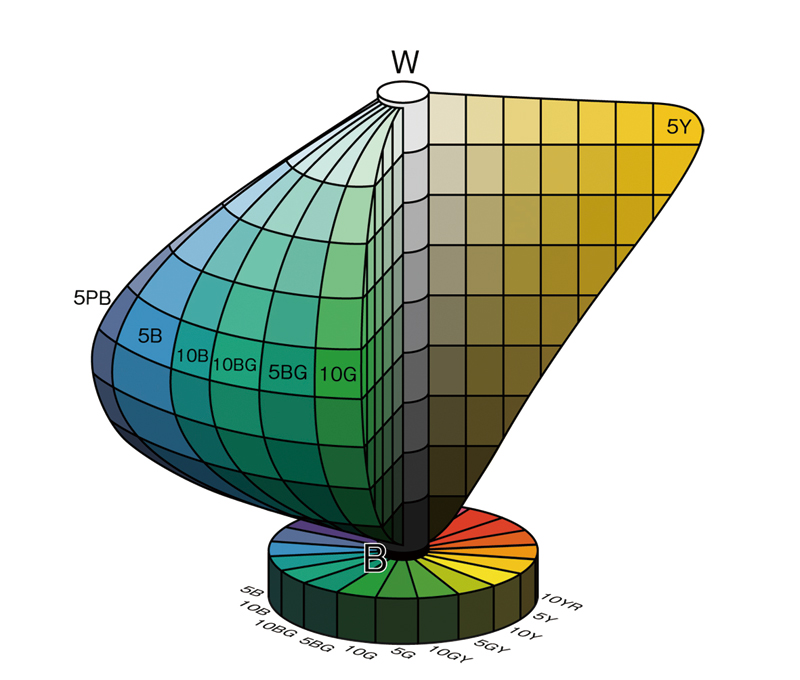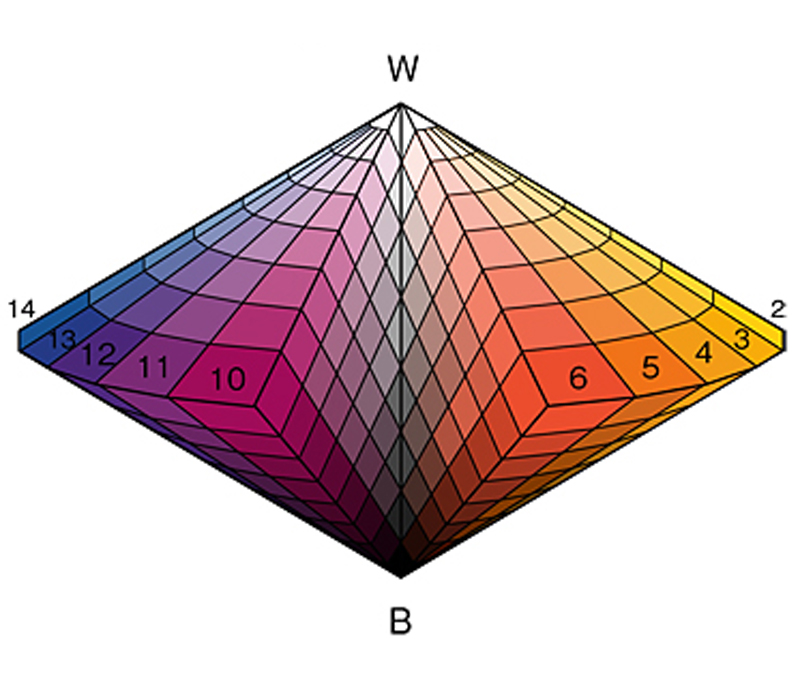Color Solid
色立体
Irorittai
CATEGORIES
A color solid is a systematic, three-dimensional representation of colors in relation to each other.
A systematic method of notation is required to describe colors accurately. This system for displaying color is called the color order system and can be represented using a hue circle or a color solid. Typical examples of this include the Munsell color system, Ostwald color system and PCCS (Practical Color Coordinate System).
The Munsell color system was invented in 1905 by the American painter and art teacher, Albert H. Munsell. It consists of 100 hues and 11 levels of lightness, and the range of saturation that can be reproduced depends on the hue and the lightness. In the color solid of the Munsell color system, the lightness is represented by the vertical axis, the hue by the circle around that axis, and the saturation by the distance to the outer circumference of the hue circle. A horizontal cross section of this color solid represents a hue circle of equal lightness.
The Ostwald color system is a color order system invented in 1920 by the German chemist, Wilhelm Ostwald. The Ostwald hue circle consists of 24 hues. PCCS (Practical Color Coordinate System) is a color order system which was released by the Japan Color Research Institute in 1964, and its hue circle is also divided into 24 hues.
* The chart shown is only an approximate display of the relationship between colors and is not an accurate recreation. Colors also appear different depending on the viewing environment.
RELATED PAGES
 Schematic diagram of the Munsell color solid
Schematic diagram of the Munsell color solid  Schematic diagram of the Ostowalt color solid
Schematic diagram of the Ostowalt color solid
